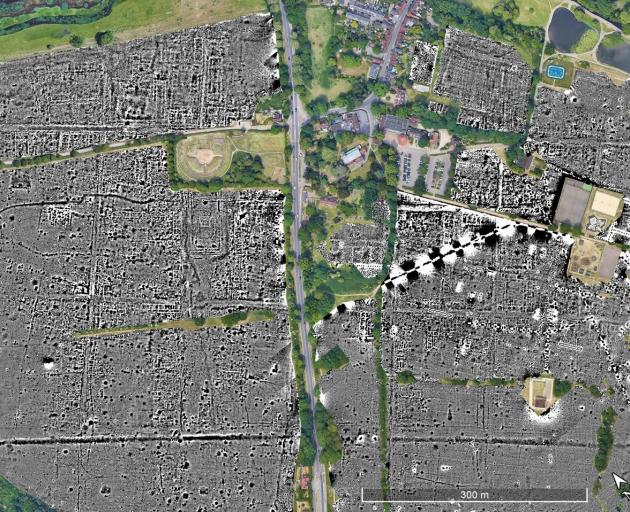Science
Ancient Secrets of Verulamium Revealed Through New Technology

Recent advancements in geophysical survey technology have unveiled significant archaeological features beneath the ancient city of Verulamium. This historic site, located in modern-day St Albans, England, has long been a focal point for archaeological research. The latest techniques are allowing researchers to map the city’s layout with unprecedented detail, revealing streets, buildings, and structures that date back to Roman times.
New Techniques Illuminate Ancient Structures
The recent survey, which employs cutting-edge technology, follows the pioneering efforts of Martin Aitken, an Oxford scientist, who introduced a proton magnetometer to the site. This device, a combination of a sensor and screen, allows for the detection of subsurface disturbances. During initial investigations, Aitken and his team successfully identified a Roman defensive ditch, likely constructed hastily in response to the approaching threat from the warrior queen, Boudicca.
Years later, the significance of this discovery has been underscored by the latest geophysical survey, which provides a clearer picture of Verulamium’s urban planning. The results depict a well-organized city with a grid pattern of streets, residential areas, and public buildings, including a forum and a theatre.
As the new survey progresses, it highlights the city’s infrastructure, revealing fine houses equipped with hypocausts, bath complexes, and intricate mosaic floors. The analysis shows that the central area of Verulamium was bustling with activity, while the outskirts featured more modest structures. Notably, the early Roman defensive ditch appears prominently on the latest maps, marked as a dark line that turns sharply at its western edge.
Exploration and Future Discoveries
While the research team was cautious about taking readings beneath the St Alban’s first XI cricket pitch, fearing disruption to the grounds, they did manage to identify a sinuous dark line representing an aqueduct leading to the theatre. This discovery suggests a sophisticated water management system, crucial for supporting the city’s population and public amenities.
In previous excavations, the team uncovered a stunning mosaic featuring a lion, an indication of the artistic skills of the Roman inhabitants. As technology continues to evolve, archaeologists believe there are many more treasures buried beneath the surface, waiting to be uncovered.
The recent findings not only enhance our understanding of Roman urban life but also highlight the importance of applying contemporary scientific methods to archaeological research. As more data is collected, Verulamium stands to reveal further secrets of its past, contributing to the rich tapestry of history in the region.
-

 World4 months ago
World4 months agoTest Your Knowledge: Take the Herald’s Afternoon Quiz Today
-

 Sports4 months ago
Sports4 months agoPM Faces Backlash from Fans During Netball Trophy Ceremony
-

 Lifestyle4 months ago
Lifestyle4 months agoDunedin Designers Win Top Award at Hokonui Fashion Event
-

 Entertainment4 months ago
Entertainment4 months agoExperience the Excitement of ‘Chief of War’ in Oʻahu
-

 Sports4 months ago
Sports4 months agoLiam Lawson Launches New Era for Racing Bulls with Strong Start
-

 World5 months ago
World5 months agoCoalition Forms to Preserve Māori Wards in Hawke’s Bay
-

 Health4 months ago
Health4 months agoWalking Faster Offers Major Health Benefits for Older Adults
-

 Lifestyle4 months ago
Lifestyle4 months agoDisney Fan Reveals Dress Code Tips for Park Visitors
-

 Politics4 months ago
Politics4 months agoScots Rally with Humor and Music to Protest Trump’s Visit
-

 Top Stories5 months ago
Top Stories5 months agoUK and India Finalize Trade Deal to Boost Economic Ties
-

 Health2 months ago
Health2 months agoRadio Host Jay-Jay Feeney’s Partner Secures Visa to Stay in NZ
-

 World5 months ago
World5 months agoHuntly Begins Water Pipe Flushing to Resolve Brown Water Issue









